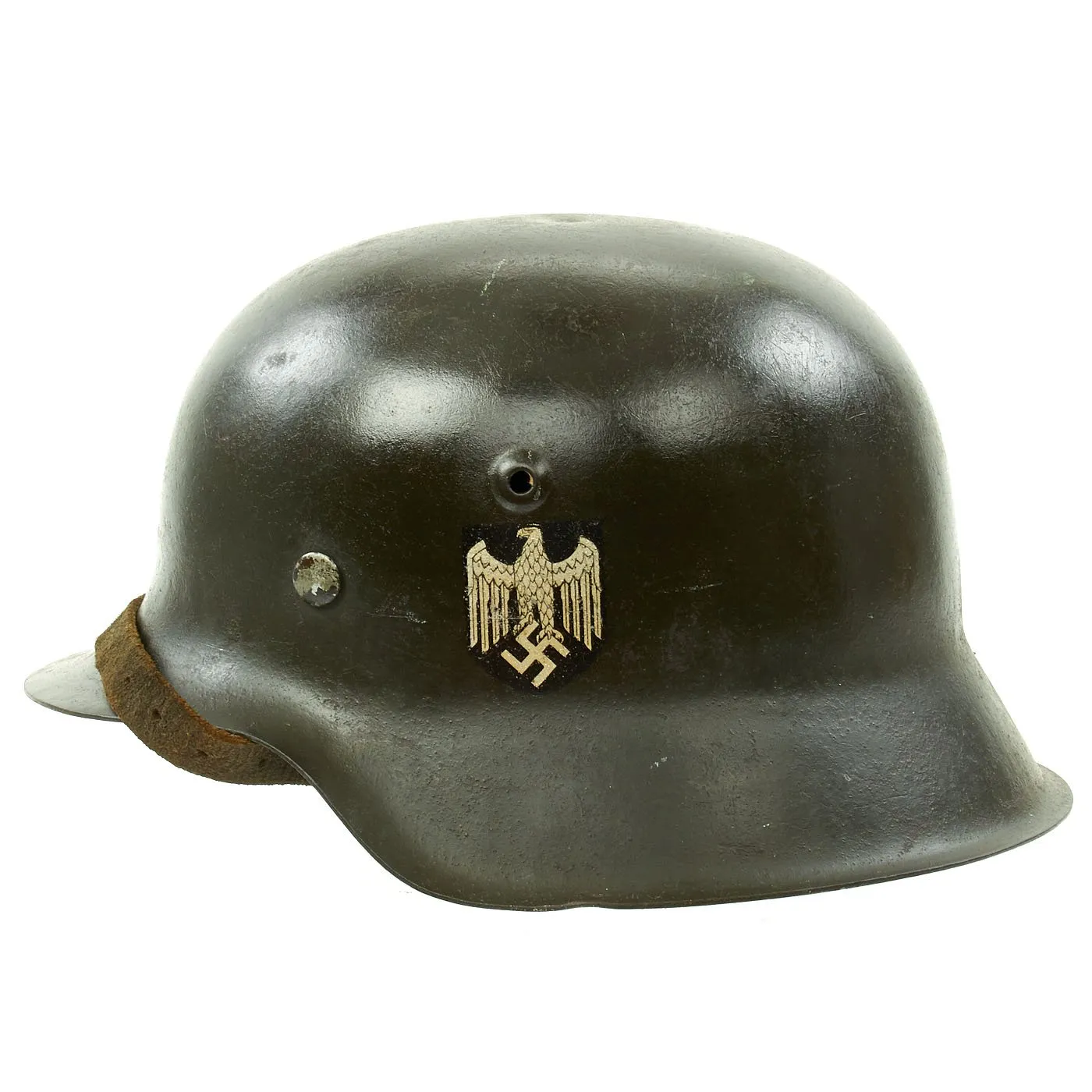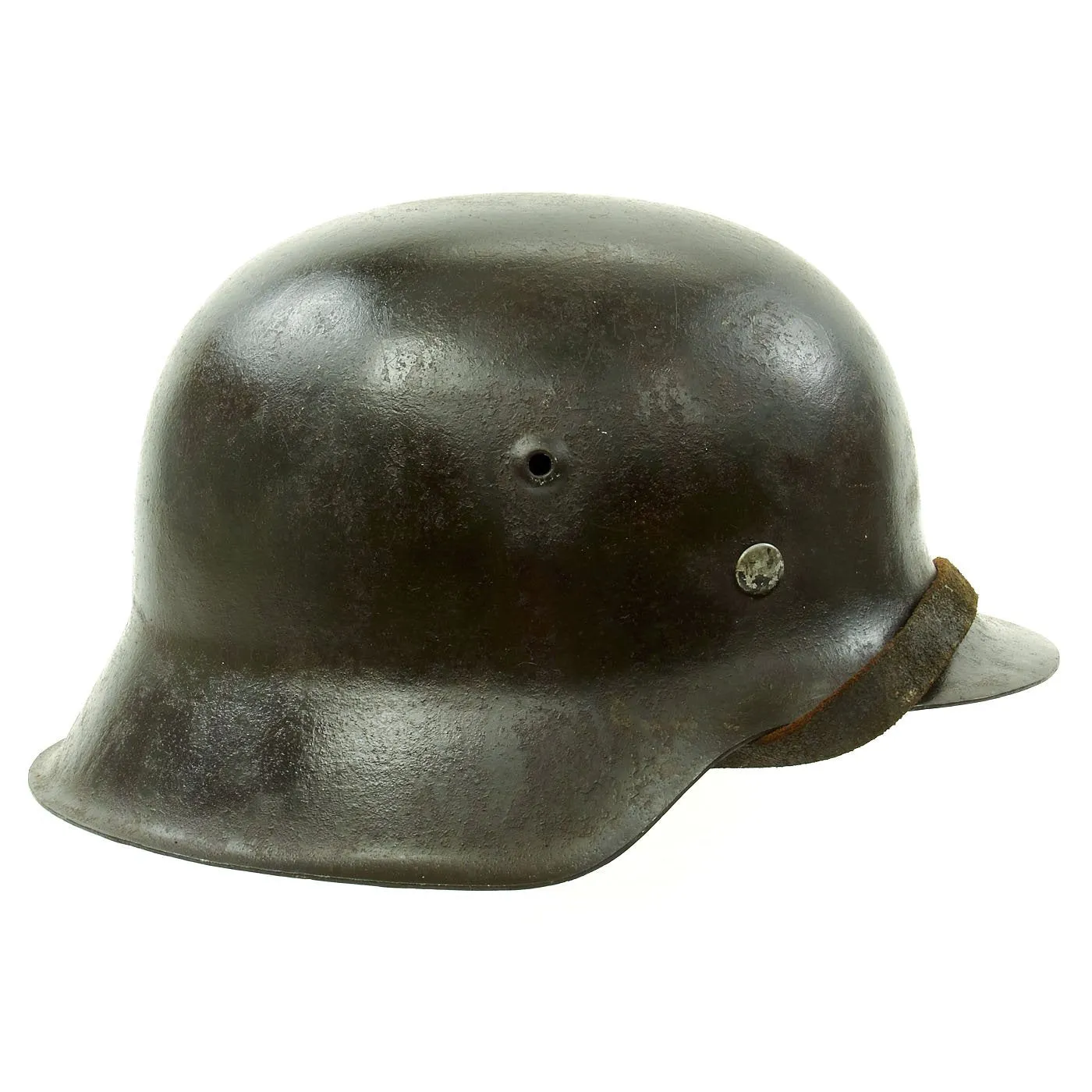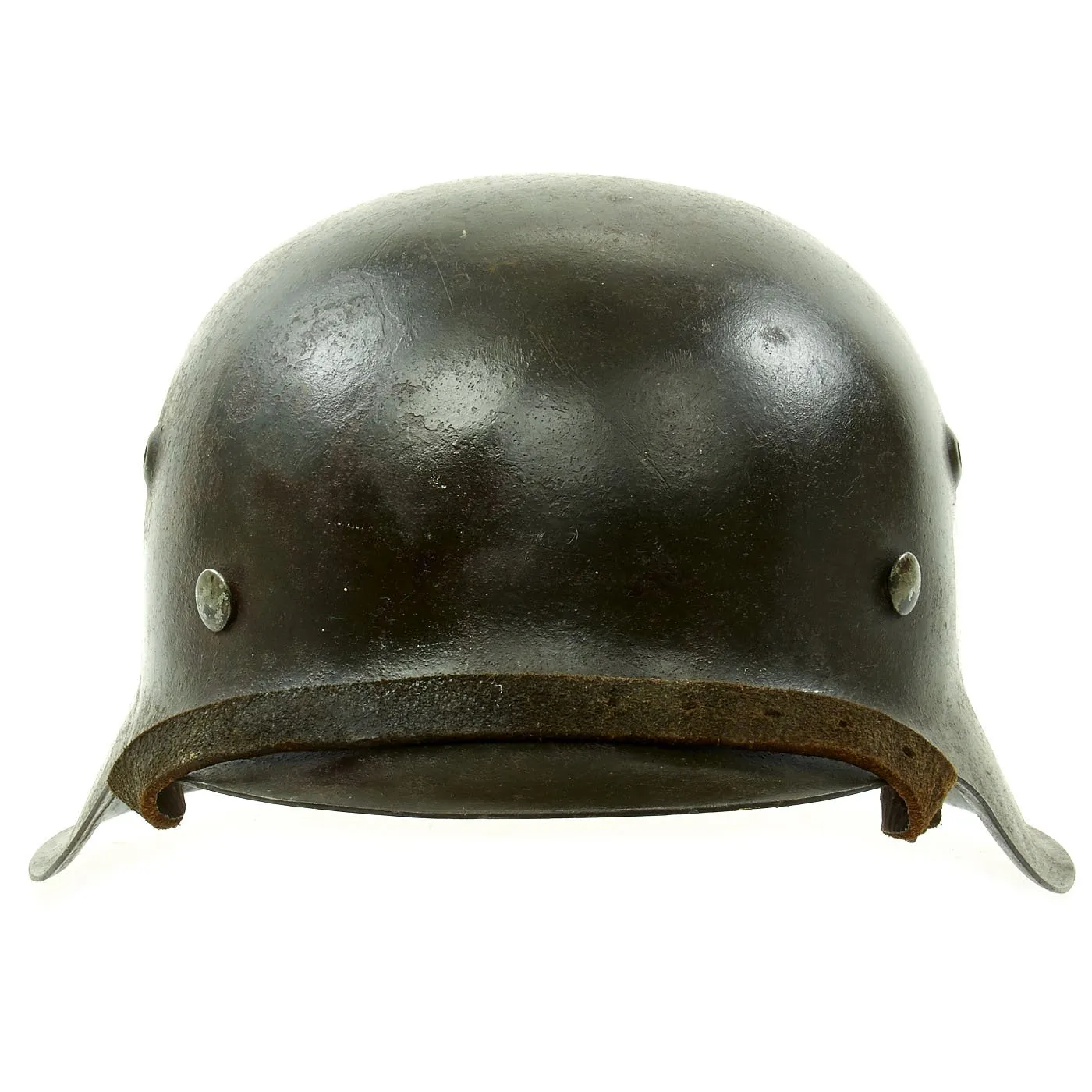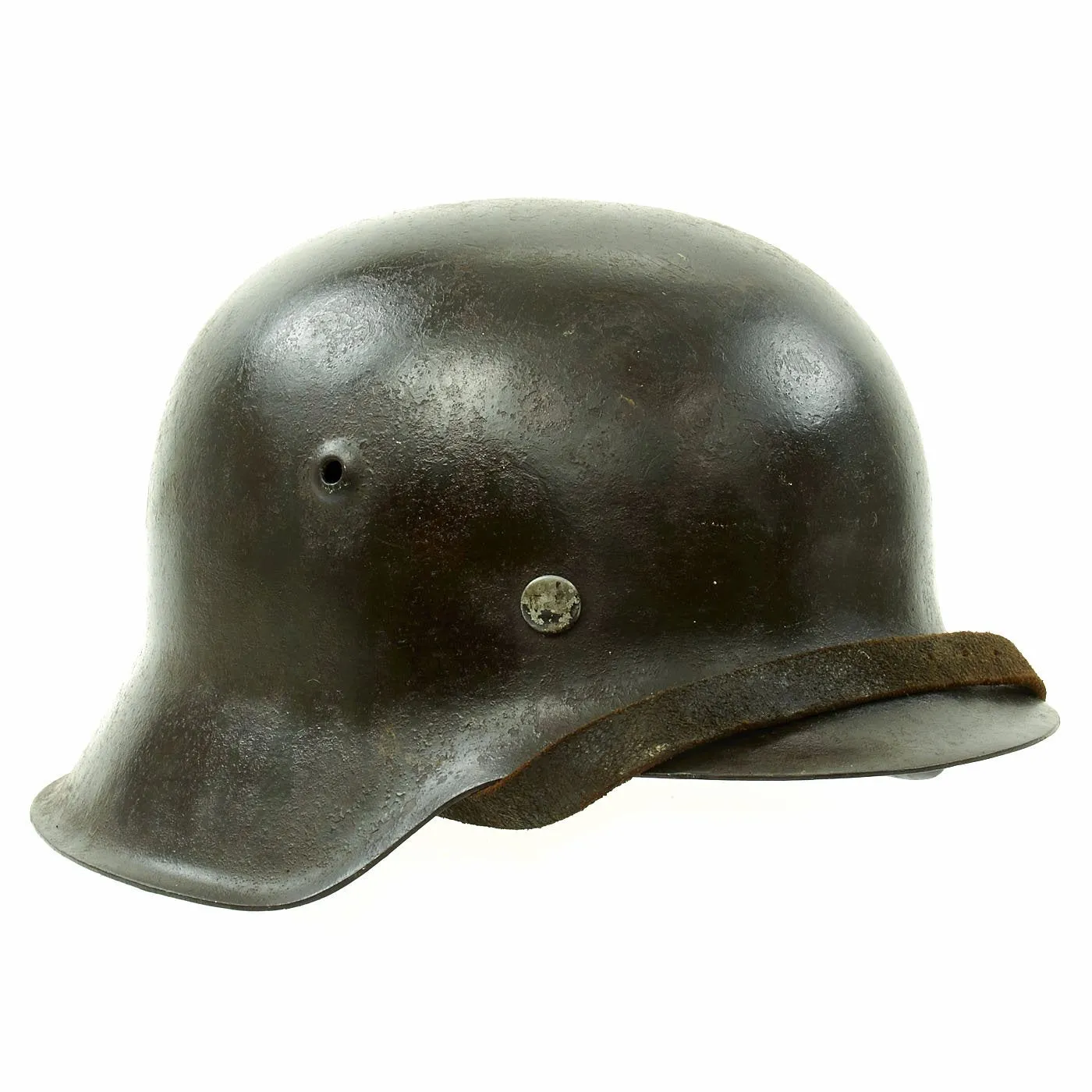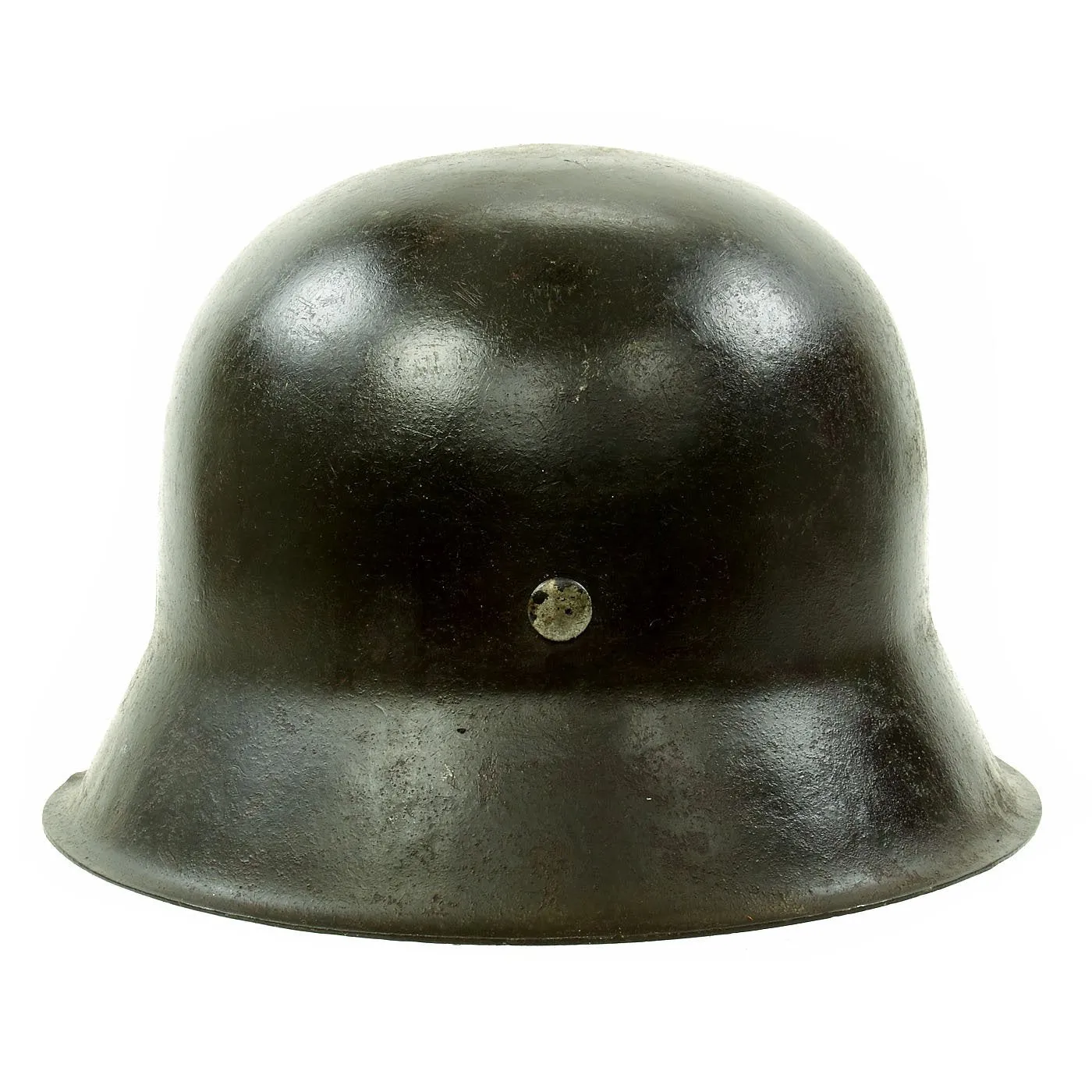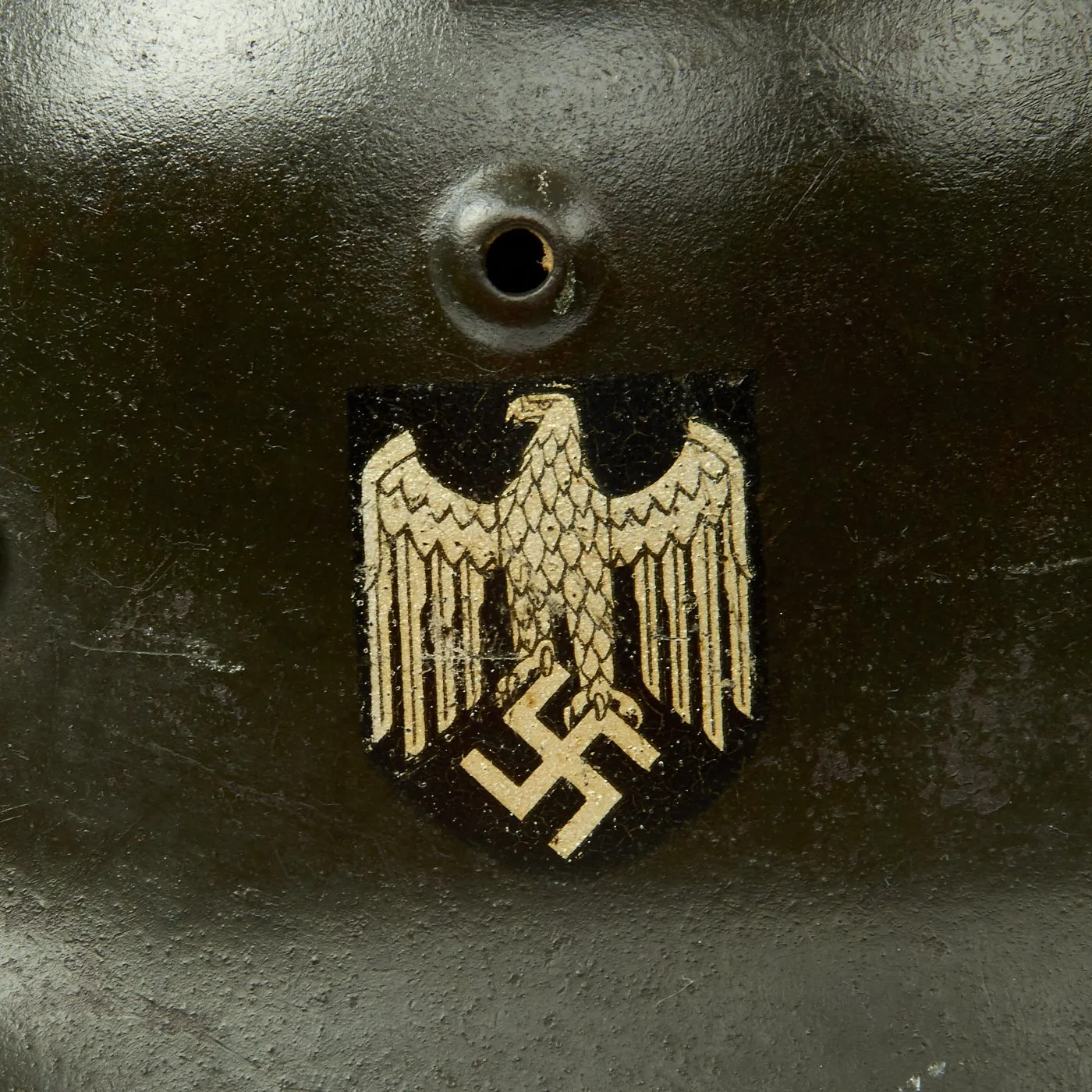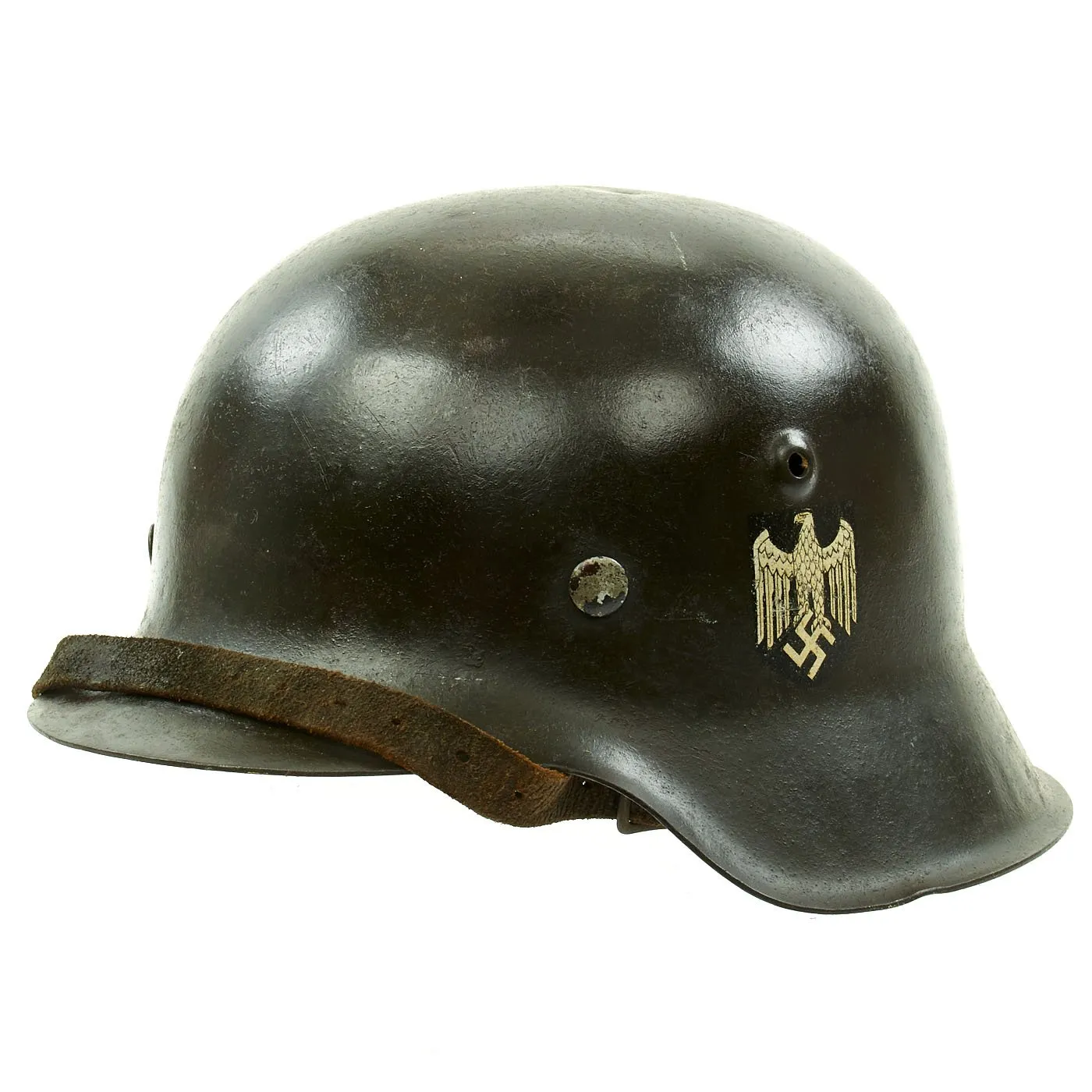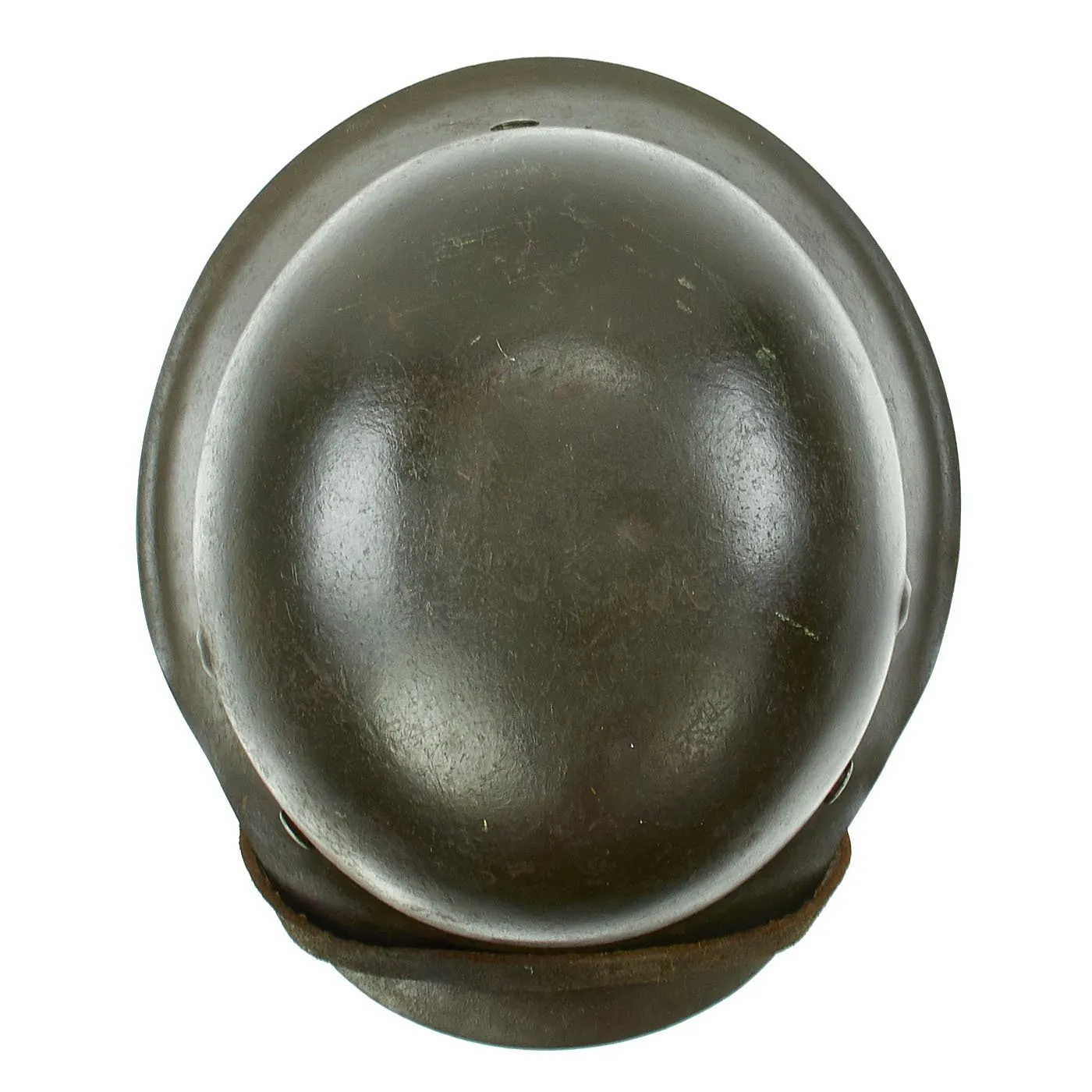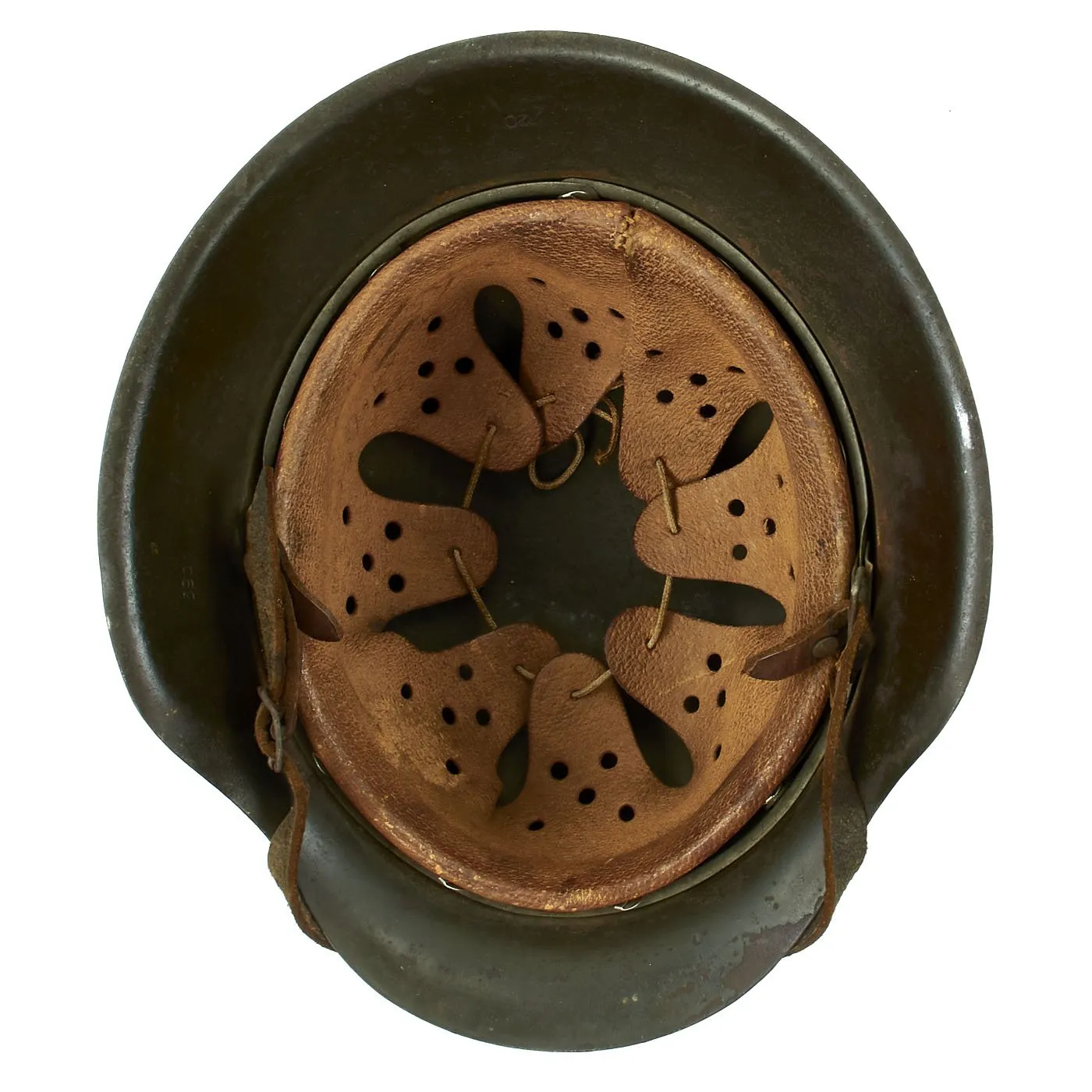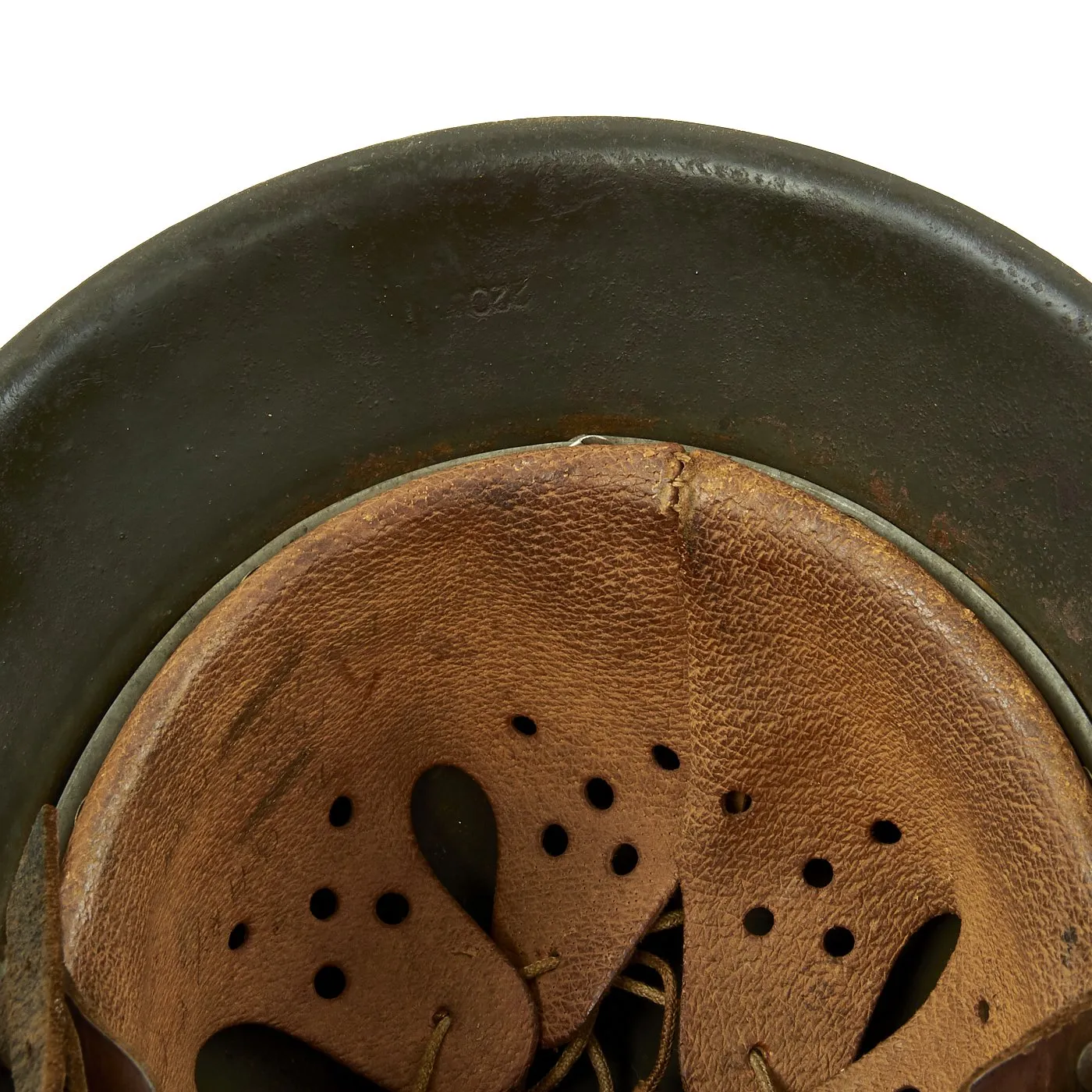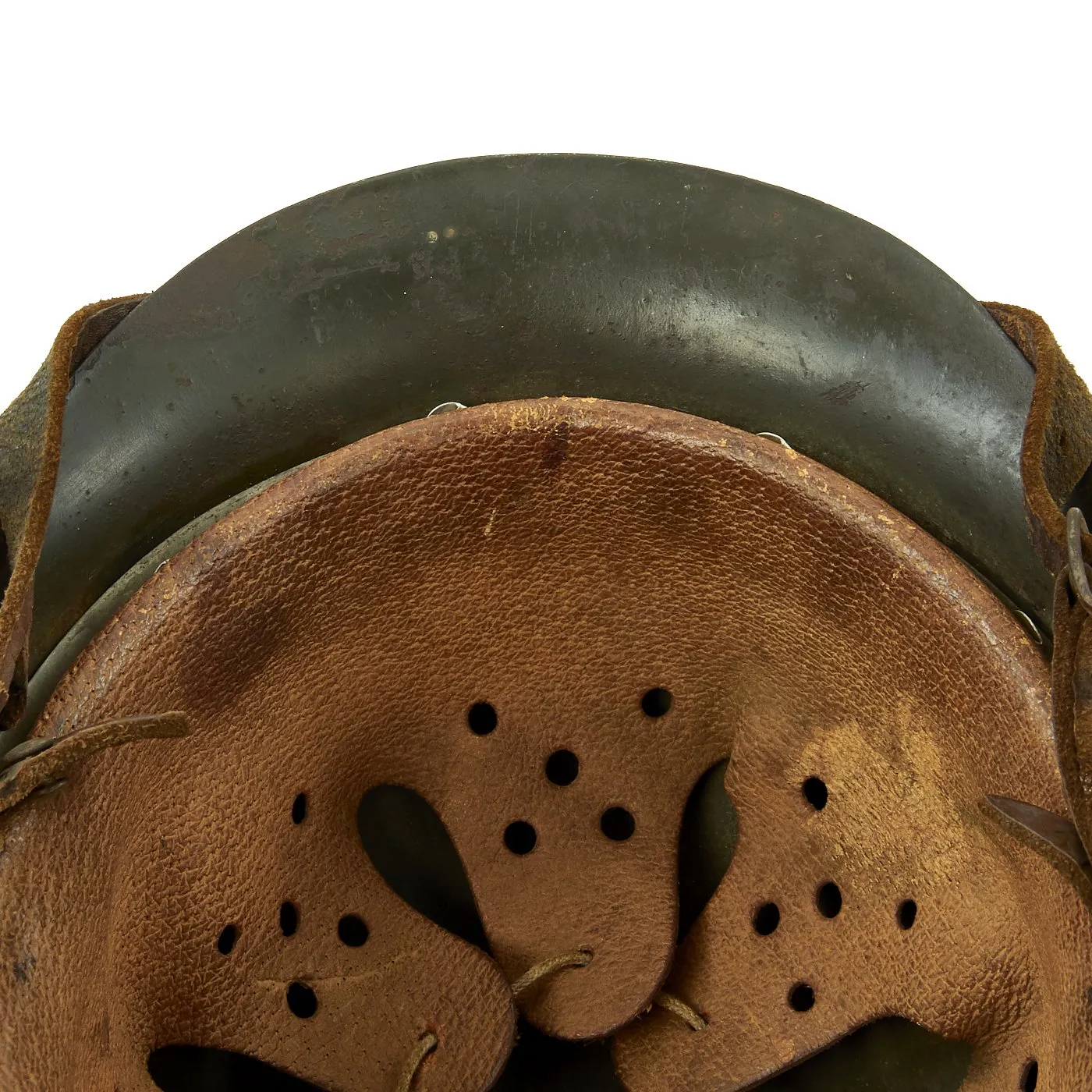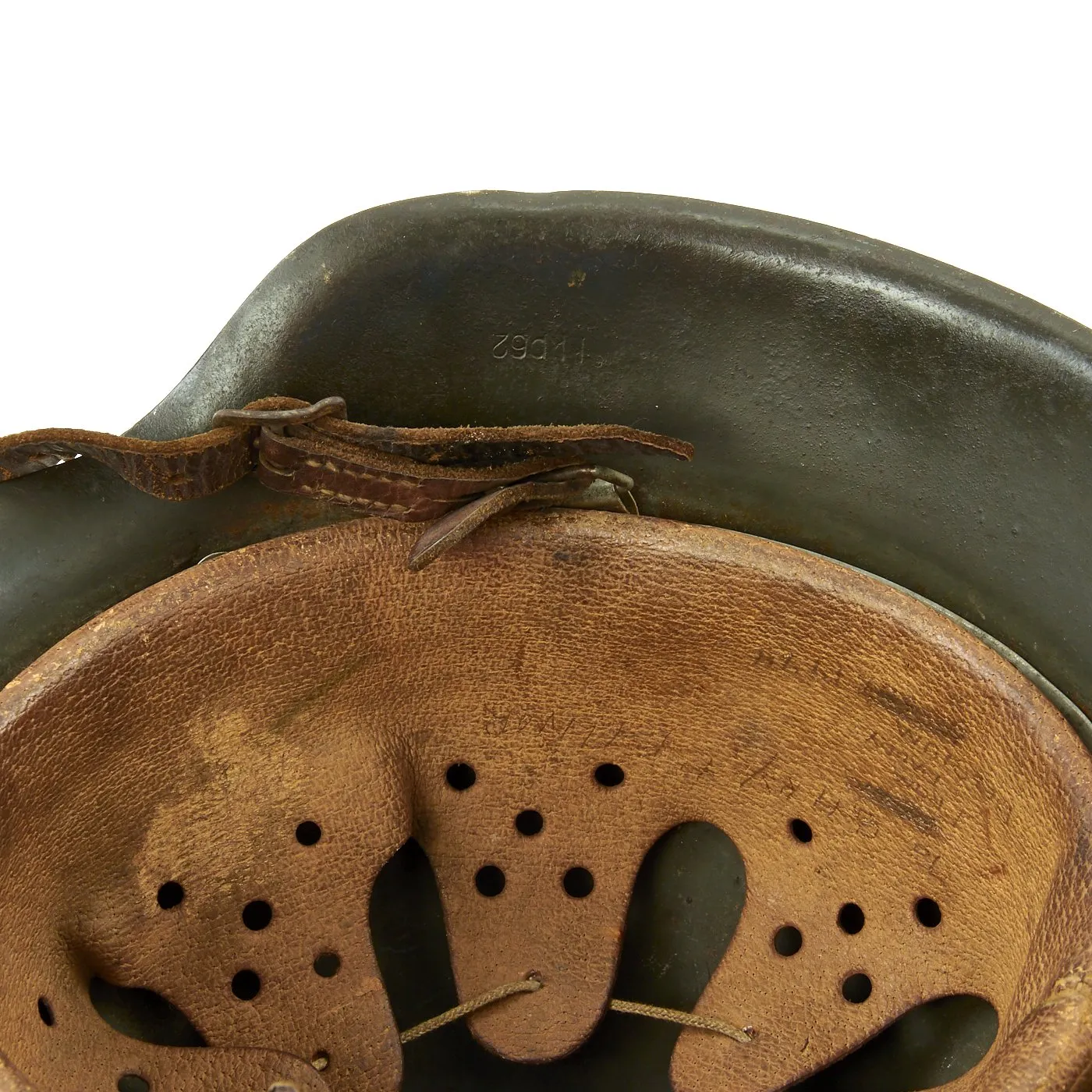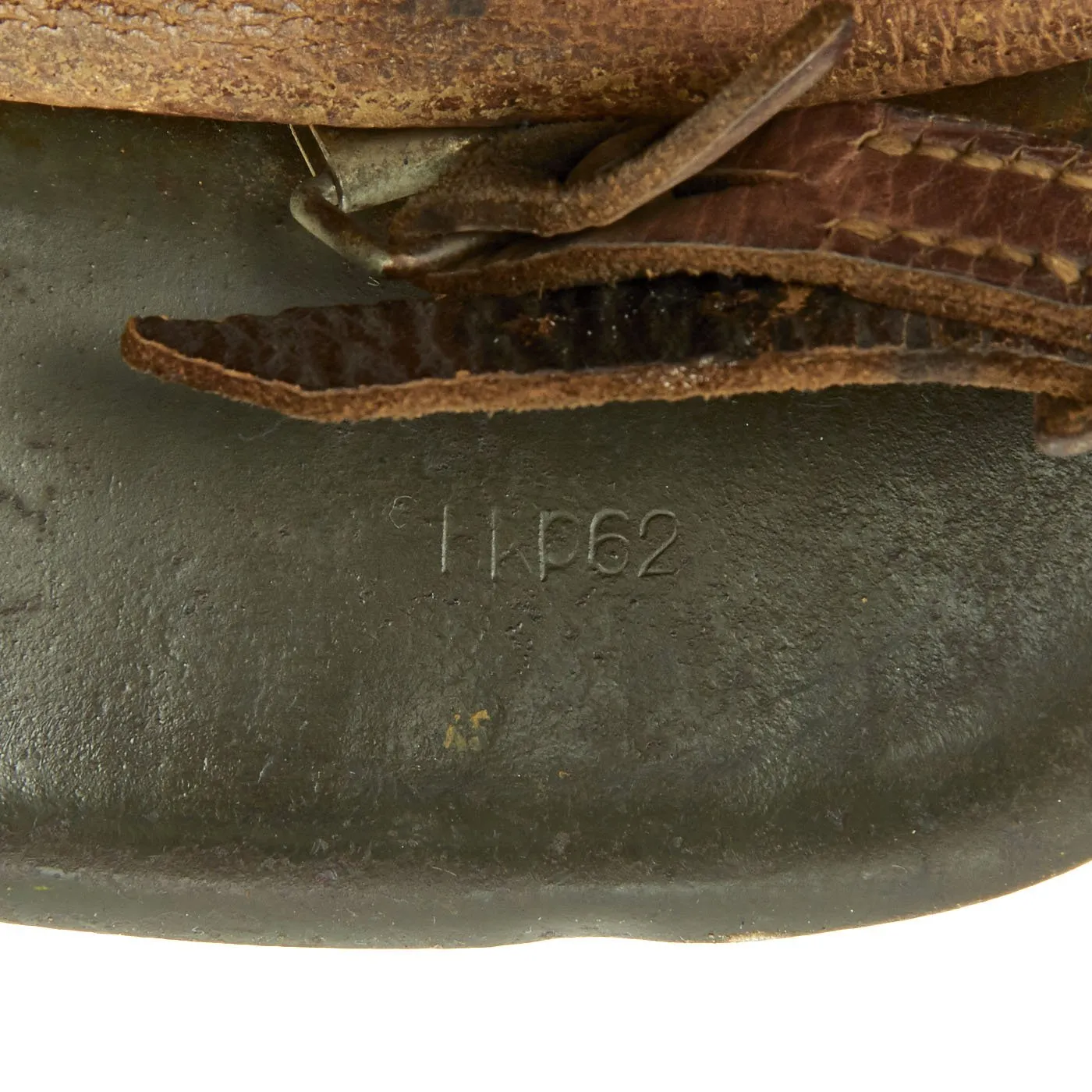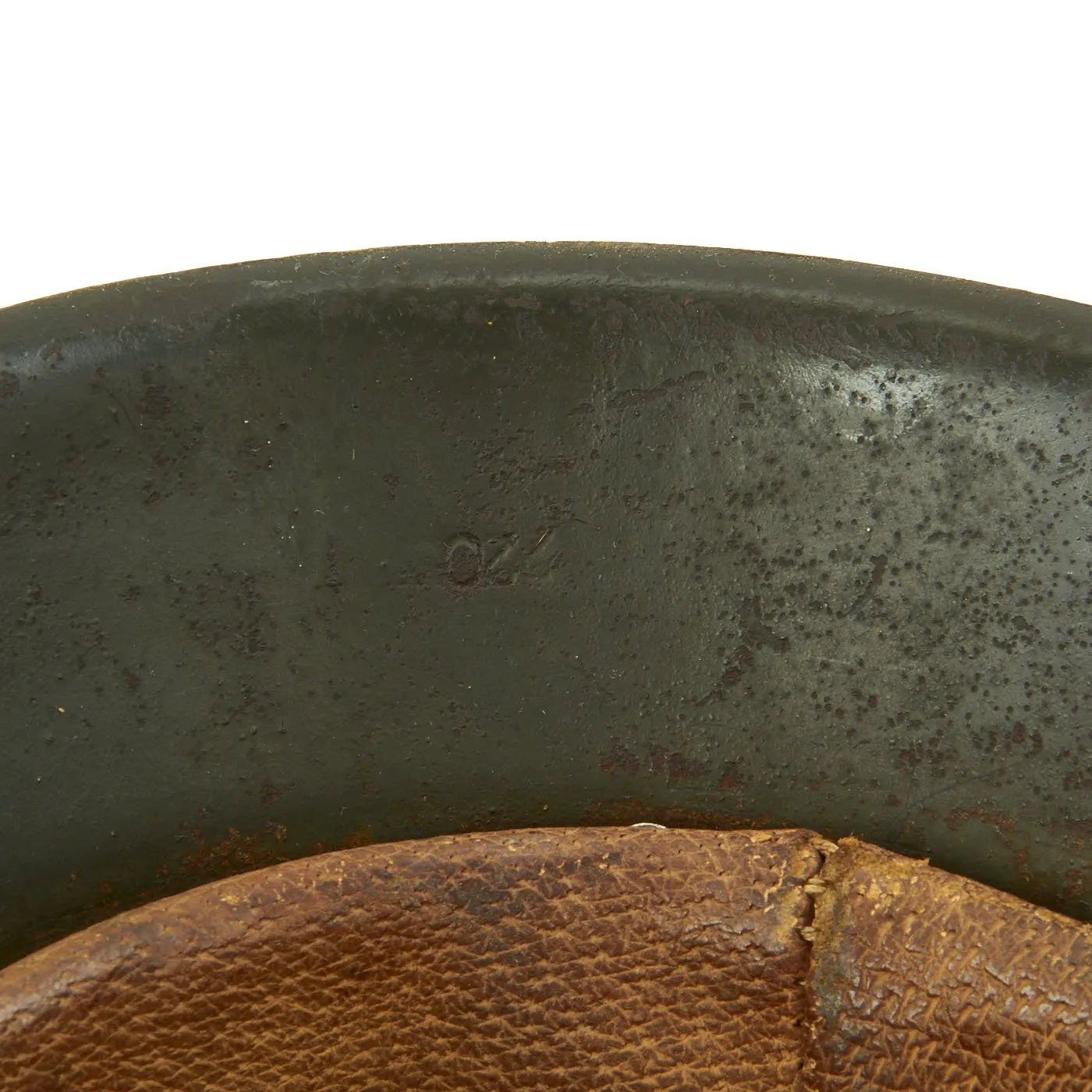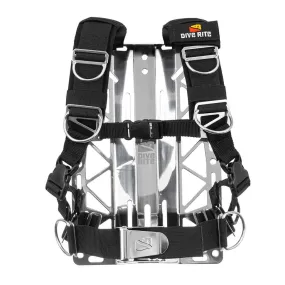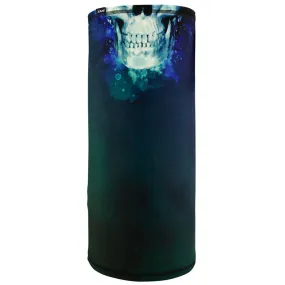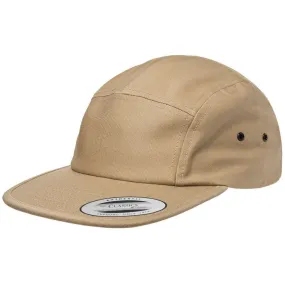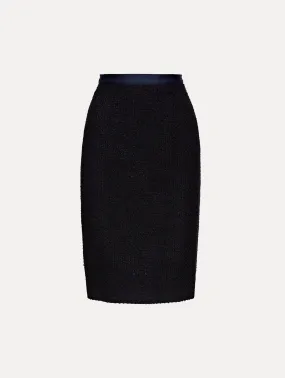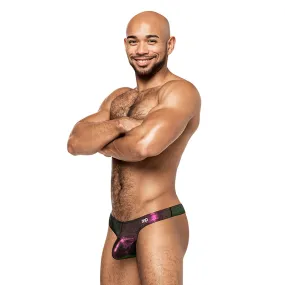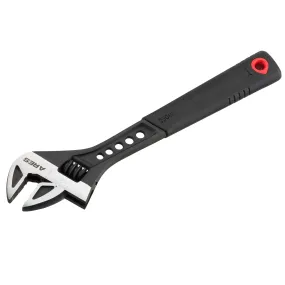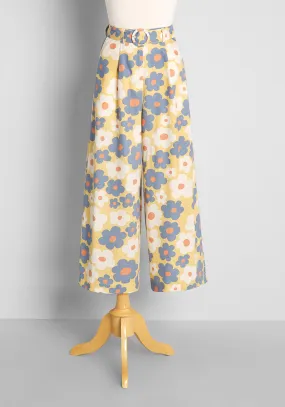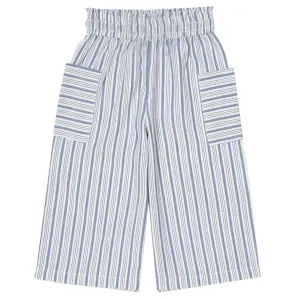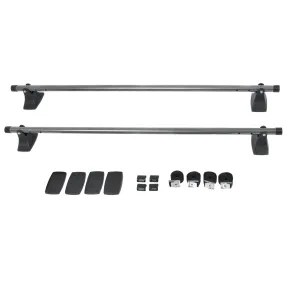Original Item: Only One Available. This is an excellent all original example of a German Model 42 Steel helmet, as issued to the Wehrmacht Heer (army). It was brought back from Belgium, as indicated on the short note written on the liner by the USGI that captured it.
This stamped sheet steel construction helmet retains about 60% of its original Feldgrau paint, with significant wear from use, especially on the top. The left side of the helmet features a very nice Heer eagle decal. The decal is retained 90%, with only light wear, and the silver color is still very vibrant. This is a very nice example of the M42 helmet, with great looking decal, and
Above the left ear interior of the apron has a stamped manufacturer's code and size hkp62 indicating it was manufactured by Sächsische Emaillier und Stanzwerke A.G., Germany. Size 62 is a smaller size shell, which can accommodate size 54-55 liners. It is also marked with lot number 2200 on the underside of the rear skirt.
All three liner retaining pins are intact, with some of the original exterior paint present. The interior of the helmet still has the original M31 leather liner, which is in good condition, showing light to moderate use. All 8 fingers are intact, complete with the original top tie. The liner was personalized after capture before being sent home, as follows:
To: Gary Elanor
FROM
DADDY
BELGIUM 1944
This is written somewhat lightly in pencil, but it is there. It is also marked with size 54 on the leather, and the late war issue galvanized steel liner band is marked on the left outer side with 62 nA / 54, indicating that the liner is a size 54, intended for a 62 shell. The right side looks to have manufacturer information, but it is dirty and oxidized, and cannot be read.
The chinstrap is mostly intact, and in very good condition considering the age. There is some age to the leather, and rust on the galvanized steel fittings, but overall it is quite nice. The main issue is a tear around the rivet on the right side.
Overall an very nice M42 Single Decal Heer Army helmet, complete with an original USGI Bring back message! M42 helmets of this quality are always the hardest to find on the market. This is an item that will only continue to appreciate in value over time.
The first "modern" steel helmets were introduced by the French army in early 1915 and were shortly followed by the British army later that year. With plans on the drawing board, experimental helmets in the field, ("Gaede" helmet), and some captured French and British helmets the German army began tests for their own steel helmet at the Kummersdorf Proving Grounds in November, and in the field in December 1915. An acceptable pattern was developed and approved and production began at Eisen-und Hüttenwerke, AG Thale/Harz, (Iron and Foundry Works), in the spring of 1916.
These first modern M16 helmets evolved into the M18 helmets by the end of WWI. The M16 and M18 helmets remained in usage through-out the Weimar Reichswehr, (National Defence Force, Circa 1919-1933), era and on into the early years of the Third Reich until the development of the smaller, lighter M35 style helmet in June 1935.
In 1934 tests began on an improved Stahlhelm, whose design was a development of World War I models. The Eisenhüttenwerke company of Thale carried out prototype design and testing, with Dr. Friedrich Schwerd once again taking a hand.
The new helmet was pressed from sheets of molybdenum steel in several stages. The size of the flared visor and skirt was reduced, and the large projecting lugs for the obsolete armor shield were eliminated. The ventilator holes were retained, but were set in smaller hollow rivets mounted to the helmet's shell. The edges of the shell were rolled over, creating a smooth edge along the helmet. Finally, a completely new leather suspension, or liner, was incorporated that greatly improved the helmet's safety, adjustability, and comfort for each wearer. These improvements made the new M1935 helmet lighter, more compact, and more comfortable to wear than the previous designs.
The Army's Supreme Command officially accepted the new helmet on June 25, 1935 and it was intended to replace all other helmets in service.
The M1935 design was slightly modified in 1940 to simplify its construction, the manufacturing process now incorporating more automated stamping methods. The principal change was to stamp the ventilator hole mounts directly onto the shell, rather than utilizing separate fittings. In other respects, the M1940 helmet was identical to the M1935. The Germans still referred to the M1940 as the M1935, while the M1940 designation were given by collectors.
The last wartime upgrade to the standard helmet took place on 6 July 1942 at the request of the Army High Command. The rolled edge found on M1935 and M1940 helmets was discontinued as a measure of economy. On 1 August 1942 the first M1942 helmets were placed into production, and this was the model produced until late in the war, when most factories were captured or stood idle due to material shortages.




